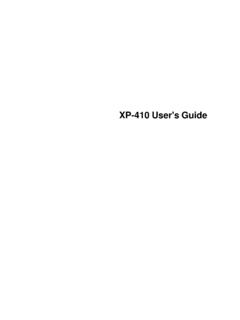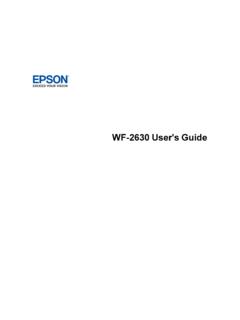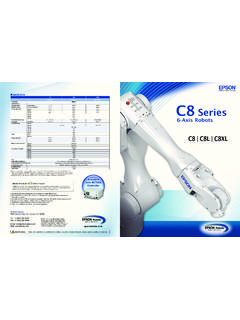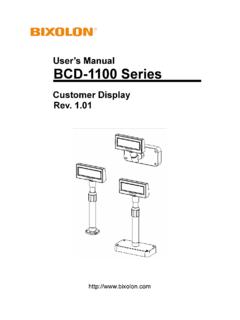Transcription of IMPULSE / SURGE TESTER 7700 / 7710 / 7720
1 IMPULSE / SURGE TESTER 7700 / 7710 / 7720 User Manual Issue B 3rd May 2006 Part N 9H7700 1 1 Contents 1. SAFETY ..1 4 General ..1 4 AC Power Supply ..1 5 Adjustment, Maintenance and Repair ..1 5 Static Electricity ..1 6 2. INTRODUCTION .. 2-1 Package and 2-1 7700 .. 2-1 7710 .. 2-1 7720 .. 2-1 3. INSTALLATION .. 3-1 AC Line Connections .. 3-1 Location .. 3-1 Measurement Connections .. 3-1 Safety Interlock .. 3-2 4. OPERATION .. 4-1 The Front Panel.
2 4-1 The Rear Panel .. 4-2 Product Identification .. 4-3 Ready State .. 4-3 Keyboard .. 4-3 System Control .. 4-3 Function .. 4-3 Edit .. 4-3 Enter .. 4-4 Test .. 4-4 Screen Soft Keys .. 4-4 Function Menu .. 4-4 Self Test .. 4-4 SYS. INFO .. 4-5 H/V CAL. and H/V TEST .. 4-5 System Setup Menu .. 4-5 SYSTEM .. 4-6 GRAPHICS .. 4-8 DATE TIME .. 4-9 PASSWORD .. 4-9 Test Programs .. 4-10 File Menu .. 4-10 Filename Character Entry .. 4-10 Creating a Test Program File .. 4-10 Edit an Existing Test Program.
3 4-11 Deleting a Test Program .. 4-11 1 Sorting .. 4-11 View Mode .. 4-12 5. TESTING A NEW COMPONENT .. 5-1 Create a New Test Program File .. 5-1 Test Voltage .. 5-1 Example of Establishing the Test Voltage .. 5-1 Test Mode Menu .. 5-1 Test Mode .. 5-1 Dummy Pulse .. 5-2 Testing Pulse .. 5-2 Creating the Standard Waveform .. 5-2 Safety Interlock .. 5-2 Learning a Component .. 5-2 Selecting the Test Parameters .. 5-3 Setting the Test Parameters .. 5-3 Waveform Area Size Setup .. 5-4 Differential Area Size Setup.
4 5-4 Flutter Value Setup .. 5-5 Waveform Comparison Setup .. 5-6 Optimizing the Test Parameter Settings .. 5-7 6. COMPONENT TESTING .. 6-1 Test Statistics .. 6-2 7. REMOTE CONTROL .. 7-1 Serial Port .. 7-1 Protocol .. 7-1 Serial Port Connections .. 7-1 REMOTE CONTROL SIGNAL .. 7-1 Commands .. 7-2 Handler Port .. 7-4 Pin Assignment .. 7-4 Port Timing .. 7-5 8. THEORY OF OPERATION .. 8-1 Applied Pulse .. 8-1 Why Use IMPULSE Testing? .. 8-1 9. HIGH VOLTAGE CALIBRATION & TEST .. 9-1 High Voltage Calibration.
5 9-1 High Voltage Test .. 9-2 10. SPECIFICATION .. 10 1 Measurement Ports .. 10 1 Advanced Functions .. 10 1 Testing Functions .. 10 1 Voltage Pulse .. 10 1 Measuring Time .. 10 1 1 Waveform Resolution ..10 1 Display/Audio ..10 2 Interface ..10 2 Memory ..10 2 Power Supply ..10 2 Accessories ..10 2 Thermo/Humility ..10 2 Size ..10 2 Weight ..10 2 Options ..10 3 11. MAINTENANCE, SUPPORT AND SERVICES .. 11-1 Guarantee .. 11-1 Maintenance .. 11-1 Cleaning .. 11-1 Safety Checks.
6 11-1 Support and Service .. 11-2 1 41. Safety General This equipment has been designed to meet the requirements of EN61010-1 Safety requirements for electrical equipment for measurement, control & laboratory use and has left the factory in a safe condition. The following definitions in EN61010-1 are applicable: OPERATOR Person operating equipment for its intended : The OPERATOR should have received training appropriate for this purpose. RESPONSIBLE BODY Individual or group responsible for the use and maintenance of equipment and for ensuring that operators are adequately trained.
7 The RESPONSIBLE BODY must ensure that this equipment is only used in the manner specified. If it is not used in such a manner, the protection provided by the equipment may be impaired. This product is not intended for use in atmospheres which are explosive, corrosive or adversely polluted ( containing conductive or excessive dust). It is not intended for use in safety critical or medical applications. The equipment can cause hazards if not used in accordance with these instructions.
8 Read them carefully and follow them in all respects. Do not use the equipment if it is damaged. In such circumstances the equipment must be made inoperative and secured against any unintentional operation. MICROTEST ELECTRONICS and the associated sales organizations accept no responsibility for personal or material damage, or for any consequential damage that results from irresponsible or unspecified operation or misuse of this equipment. 1 AC Power Supply Power cable and connector requirements vary between countries.
9 Always use a cable that conforms to local regulations, terminated in an IEC320 connector at the instrument end. If it is necessary to fit a suitable AC power plug to the power cable, the user must observe the following colour codes: WIRE EUROPEAN N. AMERICAN LIVE BROWN BLACK NEUTRAL BLUE WHITE GROUND GREEN/YELLOW GREEN The user must also ensure that the protective ground lead would be the last to break should the cable be subject to excessive strain.
10 If the plug is fused, a 3-amp fuse should be fitted. If the power cable electrical connection to the AC power plug is through screw terminals then, to ensure reliable connections, any solder tinning of the cable wires must be removed before fitting the plug. Before switching on the equipment, ensure that it is set to the voltage of the local AC power supply. WARNING! Any interruption of the protective ground conductor inside or outside the equipment or disconnection of the protective ground terminal is likely to make the equipment dangerous.









